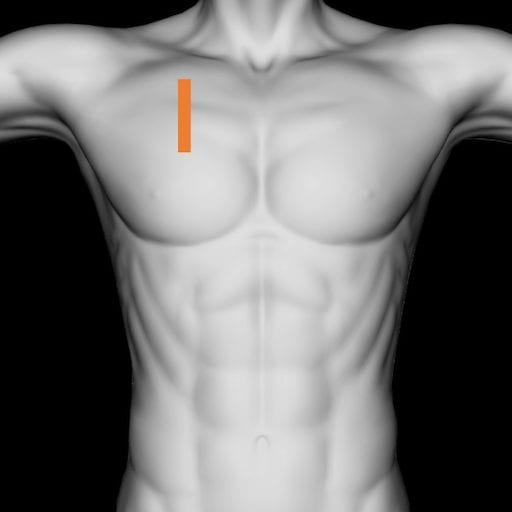Lung ultrasound: Pneumothorax
A pneumothorax is an abnormal collection of gas in the pleural space, separating the parietal pleura of the chest wall from the visceral pleura of the lung. Unless the pneumothorax is loculated or there are adhesions, the gas moves freely within the thoracic cavity. The free gas rises to the highest part of the ipsilateral thoracic cage, and moves with changes in patient position. Where the ultrasound probe interrogates a pneumothorax and lies directly over the separated pleural surfaces characteristic ultrasound features are recognised.
Typical ultrasound features of pneumothorax
Ultrasound appearance of pneumothorax explained
The ultrasound appearance of pneumothorax
Loss of lung sliding and the movement artefact deep to the pleural line
- A pneumothorax lies deep to the smooth parietal pleural surface.
- The gas interface creates a highly reflective surface reflecting all ultrasound energy.
- This prevents imaging of structures lying below the pneumothorax. The movement of the lung, deep to the pneumothorax is completely hidden – lung sliding is lost.
Loss of characteristic B-lines
- B-lines (vertical short path reverberation artefacts) are created by alveolar and interstitial fluid or fibrosis at the lung surface.
- In the same way that pneumothorax hides lung sliding it also hides any B-lines lying below.
Increased clarity of A-lines
- A-lines (horizontal long path reverberation artefacts) are echogenic horizontal artifactual lines deep to the pleural surface that are characteristic of pneumothorax.
- The mirror like, flat parietal pleura overlying the pneumothorax reflects the ultrasound which often then reverberates between the pleural surface and other horizontal reflecting surfaces above. These include fascial planes and the transducer surface itself.
- Multiple reflections cause horizontal linear artefacts mirroring the flat surfaces above the pleural surface, deep to the pleural surface.
Lung Point
- Pneumothorax separates the visceral and parietal pleural surfaces.
- The point at which these surfaces meet is known as the lung point
Related Clinical Cases
ULTRASOUND LIBRARY
POCUS
An Emergency physician based in Perth, Western Australia. Professionally my passion lies in integrating advanced diagnostic and procedural ultrasound into clinical assessment and management of the undifferentiated patient. Sharing hard fought knowledge with innovative educational techniques to ensure knowledge translation and dissemination is my goal. Family, wild coastlines, native forests, and tinkering in the shed fills the rest of my contented time. | SonoCPD | Ultrasound library | Top 100 | @thesonocave |


